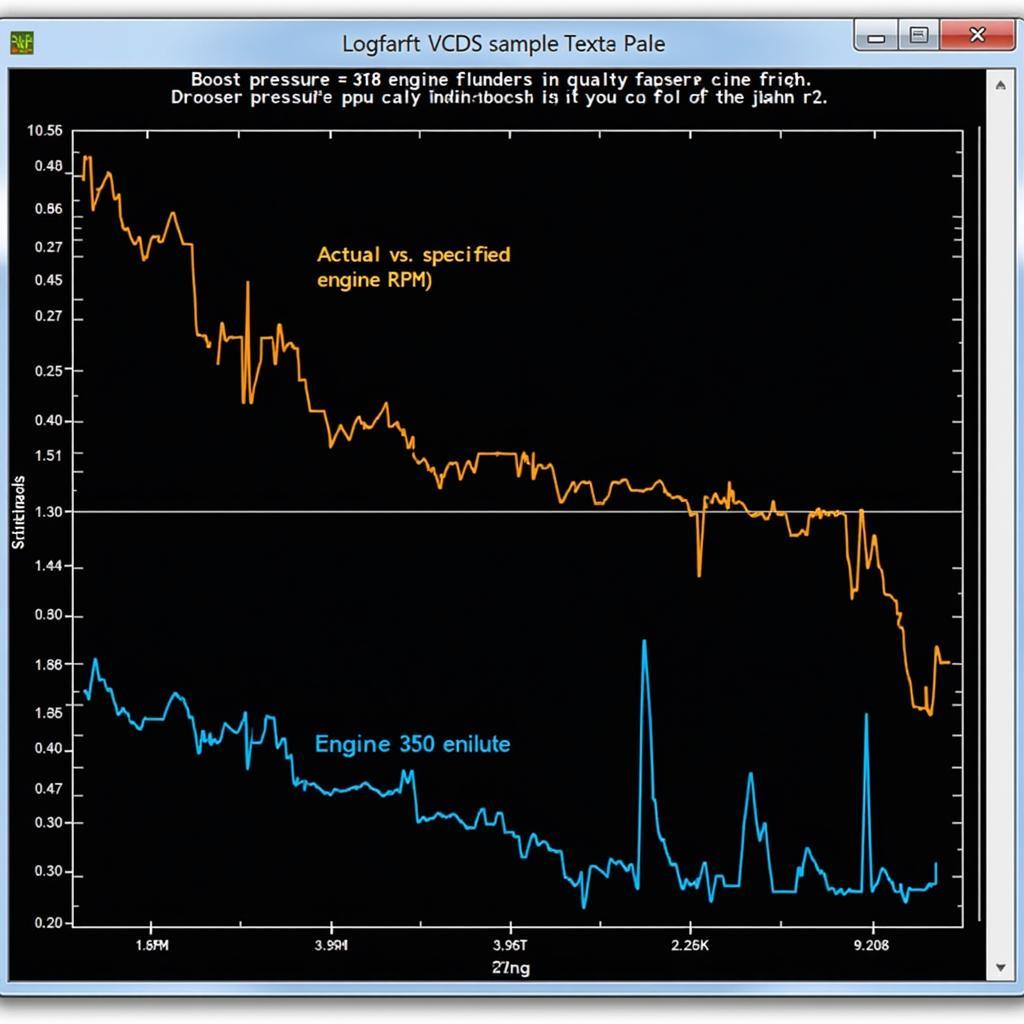Your cart is currently empty!

Understanding VCDS Logfahrt for Your 1.8T Engine
VCDS Logfahrt 1.8T is a phrase that resonates with many Audi and Volkswagen owners, particularly those who enjoy delving into the intricacies of their vehicle’s performance. This powerful diagnostic tool, VCDS (Vag-Com Diagnostic System), allows you to perform a “logfahrt,” essentially a data logging session, to analyze the performance of your 1.8T engine. Whether you’re troubleshooting a problem or aiming to optimize your car’s performance, understanding and interpreting this data is crucial.
What is VCDS Logfahrt and Why is it Important for Your 1.8T?
A VCDS Logfahrt involves recording specific data points from your 1.8T engine’s ECU (Engine Control Unit) while driving under specific conditions. This data, often presented in graphical format, provides invaluable insights into the engine’s behavior, revealing potential issues or areas for improvement.
For 1.8T owners, VCDS Logfahrt is particularly useful for:
- Boost Leak Detection: Identifying leaks in the turbocharger system that lead to reduced power and efficiency.
- Fuel Trim Analysis: Monitoring fuel adjustments made by the ECU, indicating potential issues with sensors, injectors, or air/fuel ratios.
- Ignition Timing Evaluation: Assessing the timing of the spark plugs, crucial for optimal combustion and performance.
- Sensor Performance Monitoring: Checking the accuracy and response time of various sensors like MAF (Mass Air Flow), O2 (Oxygen), and coolant temperature sensors.
How to Perform a VCDS Logfahrt on Your 1.8T Engine
Performing a VCDS Logfahrt requires a genuine VCDS interface cable and software. Once you have these, follow these general steps:
- Connect and Communicate: Connect the VCDS interface to your car’s OBD-II port and establish communication with the ECU.
- Select Engine Module: Navigate to the engine control module within the VCDS software.
- Choose Measuring Blocks: Select the specific data points (measuring blocks) you want to record during the logfahrt. Common blocks for a 1.8T include boost pressure, specified boost, fuel trims, ignition timing, engine speed (RPM), and throttle position.
- Start Logging: Initiate the logging function in VCDS and proceed with the driving test.
- Perform the Drive Cycle: Follow a predefined driving pattern, usually involving accelerating under load in a specific gear, to capture relevant data.
- Save and Analyze: After the drive cycle, stop the logging and save the data file. Analyze the graphs and data points, comparing them against expected values or using online resources and forums for interpretation.
 Analyzing VCDS Logfahrt Data
Analyzing VCDS Logfahrt Data
Common Issues Revealed by VCDS Logfahrt on 1.8T Engines
VCDS Logfahrt can uncover a range of issues, from minor sensor discrepancies to more significant problems like boost leaks or faulty ignition timing.
Here are some common issues specific to the 1.8T engine:
- Boost Leaks: Deviations between actual and specified boost pressure, particularly under load, often indicate a leak in the intercooler, charge pipes, or related hoses.
- Vacuum Leaks: Fluctuating idle speed, lean fuel trims, and erratic boost readings can point towards vacuum leaks in hoses or the intake manifold.
- Faulty N75 Valve: This valve controls boost pressure, and a malfunctioning N75 can lead to overboosting, underboosting, or fluctuating boost levels.
- MAF Sensor Errors: Inaccurate readings from the Mass Air Flow sensor can disrupt the air/fuel mixture, affecting performance and fuel economy.
“Regular VCDS Logfahrt checks are like taking your 1.8T to a performance doctor. You get a detailed look at what’s going on under the hood, allowing you to address minor issues before they become major problems.” – David Miller, Automotive Electronics Specialist
Tips for Effective VCDS Logfahrt Analysis
- Establish a Baseline: Before making modifications, perform a logfahrt on a stock engine to establish a baseline for comparison.
- Focus on Key Parameters: Prioritize analyzing essential parameters like boost, fuel trims, and ignition timing first.
- Compare with Known Good Data: Utilize online resources, forums, or consult with experienced tuners to compare your logfahrt data with known good values.
- Document Your Findings: Keep a record of your logfahrt data and any modifications made for future reference.
Conclusion
VCDS Logfahrt is an indispensable tool for 1.8T owners, offering a deep dive into the engine’s performance and revealing potential issues or areas for optimization. By understanding how to perform and interpret logfahrt data, you can ensure your 1.8T runs smoothly and delivers its full potential.
For expert assistance with your 1.8T engine diagnostics or VCDS Logfahrt analysis, contact us at VCDs Tool. Our team of experienced technicians is here to help. You can reach us at +1 (641) 206-8880 and our email address: vcdstool@gmail.com or visit our office at 6719 W 70th Ave, Arvada, CO 80003, USA.
by
Tags:
Comments
2 responses to “Understanding VCDS Logfahrt for Your 1.8T Engine”
[…] into VCDS diagnostics and specific procedures for your VAG vehicle, explore our detailed guide on VCDS Logfahrt 1.8 T and delve deeper into VCDS Idle Speed […]
[…] vcds logfahrt 1.8 t […]
Leave a Reply